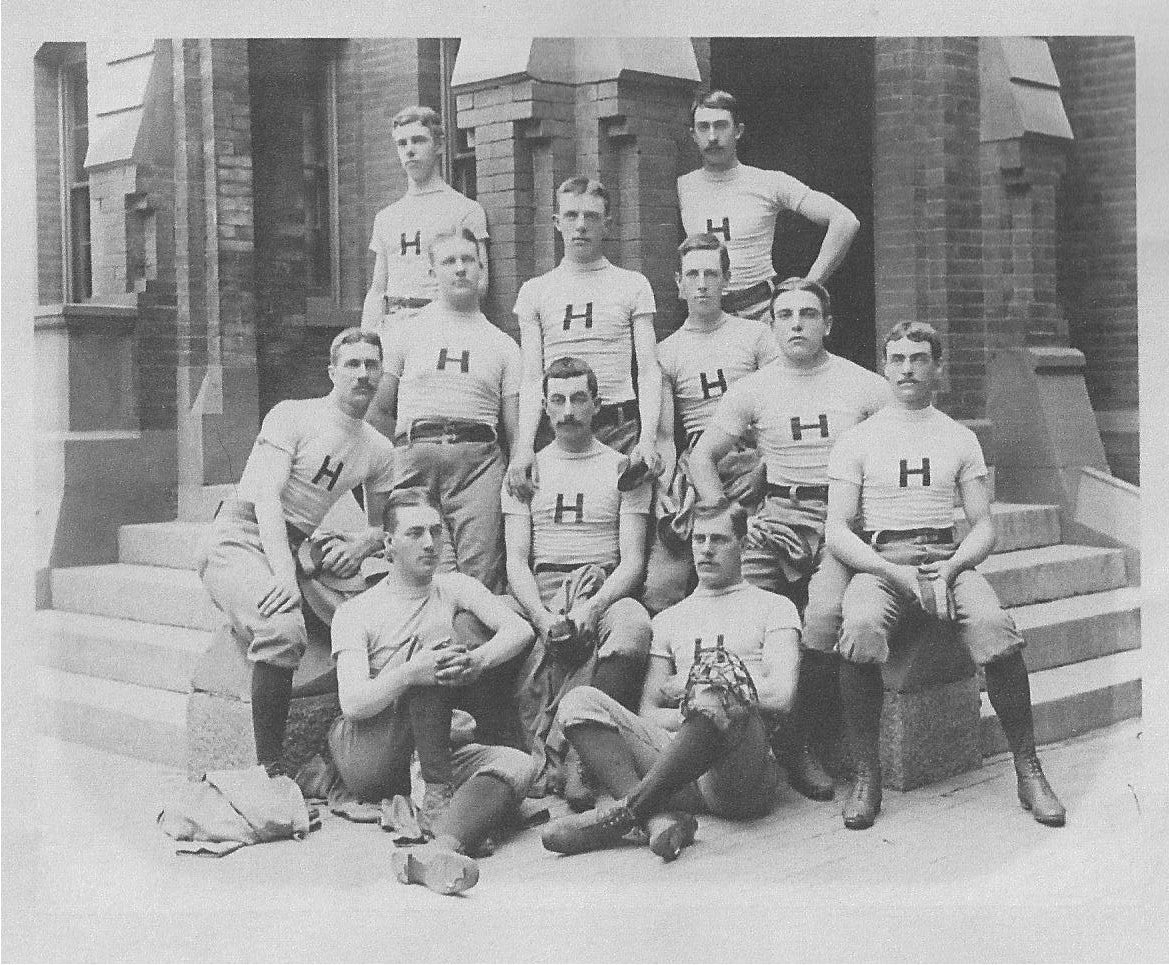
Why Caseyatthe.blog?
So why devote a blog in 2019 to the story of a poem written by a nearly unknown author in 1888?
For one thing, the poem created a character --"the Mighty Casey"--who rapidly became a legend to reside with Paul Bunyan, John Henry, and Pecos Bill in the American Valhalla of folk heroes. Is there any better marker of cultural immortality than the commemoration of these four on a set of stamps issued by the U.S. Postal Service in 1996?

"Casey at the Bat," the poem by Ernest Lawrence Thayer, persisted in popularity well into the twentieth century--and beyond.

Jack Davis's illustrated version of Thayer's original "Casey" in Mad Comic Book #6, 1953
"Casey" was still read and recited by my schoolmates--its original luster undiminished by Jack Davis's illustrated version in Mad Comic Book 1953, Number 6, or the irreverent Don Martin's MAD Magazine beatnik version, "Cool Casey at the Bat" in 1960:
"The action wasn't groovy for the Endsville nine that day, The beat was four to two with just one chorus more to sway...."

Panel of Don Martin's original rough design for "Cool Casey at the Bat," Mad Magazine #58 (1960), imaged by Heritage Auctions (HA.com)
As a schoolboy I had been intrigued by the author's near-anonymity and amused by the various ways "Casey" was parodied--becoming perhaps the most spoofed of all American poems. In college English classes, exposure to ancient lore and legends, including Beowulf and the Iliad, made me wonder if Thayer had envisioned Casey with reference to a legendary or mythical figure. (The short answer is "Yes, he did," as many of his own contemporaries recognized! We'll look into that matter in another post).
In 2012 a professional hiatus left me with time on my hands. On the shelf of the public library I discovered the definitive account of the ascent of "Casey at the Bat" to national popularity. "Casey" was first recited to a Broadway audience on August 14, 1888 by DeWolf Hopper, one of the era's best known comic actors. The Night Casey Was Born: The True Story Behind the Great American Ballad "Casey at the Bat" (New York: The Overland Press, 2012) by John Evangelist Walsh, is required reading for aficionados of baseball lore, or for unrepentant "cranks" as baseball fans were known in 1888. Hopper, a dominant figure in musical theater through the Gilded Age into the 1930's, claimed that he had recited "Casey" more than ten thousand times in his long career. And Hopper would not have been surprised that in the 21st century, he is remembered more for bringing "Casey" to the attention of a national audience than for any of his acclaimed performances in comic operettas by John Philip Souza or Gilbert & Sullivan.

Interior of Wallack's Theatre, 30th and Broadway, 1880's Courtesy of The Actors Fund (www.actorsfund.org)

Musical actor and baseball "crank" William DeWolf Hopper 1858-1935
But back to John Evangelist Walsh--a prolific journalist, biographer, novelist. editor and historian whose work seemed to revolve around the investigation of intriguing historical mysteries. I had the privilege of corresponding with Walsh prior to his death in 2015. I wrote him originally to point out something his painstaking research had missed: that the "night 'Casey' was born" at Wallack's Theatre took place--by odd coincidence-- on the same date as its author's 25th birthday -- August 14, 1888.
In addition, Walsh had turned up a couple of loose ends in the story of "Casey's" creation -- one involving the poem's unique chronological setting, the other regarding the author himself. In Walsh's imaginative re-creation of Thayer's writing of "Casey," he notes that Thayer "tacked on" a "curiously whimsical subtitle: 'A Ballad of the Republic, Sung in the Year 1888.'" Why, Walsh asked, did Thayer subtitle his ballad "of the Republic" as opposed to "of Baseball?" And why, he puzzled, was the ballad to be "sung" instead of read or recited?
"And," persisted Walsh, "Why specify the year? What did 1888 have to do with anything?"
Walsh proposed his own answers to these puzzles: baseball in Thayer's time had become the "hurrah game of the Republic" (as Walt Whitman famously exclaimed); and the author's dating the poem in the year of its origin, 1888, coincided with a sort of watershed moment as baseball swiftly evolved from its origins as a popular pastime toward its destiny as a professional sport.

John Evangelist Walsh, 1927-2015 (Courtesy Wisconsin State Journal). Walsh is perhaps best known for his direction of a staff of editors for the Reader's Digest con-densed version of the Bible (completed in 1982).
I regret that by the time I had formulated my own answers to these questions, the prolific Walsh had passed on, leaving behind a set of manuscripts he had been working on until the day he died. I fancy that John Evangelist Walsh has since been able to confirm his solutions to intriguing historical puzzles--the mysterious deaths of Edgar Allen Poe and William Shakespeare; the haunting image of the Shroud of Turin; the secret love of the reclusive Emily Dickinson, and many others--by interviewing the principal characters themselves in the cerulean salons of the Great Beyond. But for those of us not so favored, I can only try to carry on Walsh's legacy of literary sleuthing to provide a more satisfying answer to Thayer's "curiously whimsical subtitle" -- and to other unresolved enigmas surrounding the "Casey" legend.
I mentioned one other loose end--the biographical aspect of Walsh's understanding of the origin of "Casey." Specifically, what were Thayer's reasons for abandoning the life of a reporter and humorist at the San Francisco Examiner for the comfortable, if unexciting, confines of the family business in Worcester? Thayer wrote to his family that the journalism business was becoming a crowded--and increasingly competitive--field. Young Thayer feared being edged out by someone more prolific, more eager, or more talented than himself. Also, wrote Thayer to his family, the newspaper business was not a lucrative one--not at least for the staff of reporters, editors, and illustrators who labored to fill the columns and pages every day.
"But there was still another reason," wrote Walsh,
"...which by itself would probably have been enough to explain all his hesitations. In San Francisco he'd fallen in love. Encouraged by the girl, he'd happily written home about marrying, and settling down on the coast. The young lady was the beautiful sister of a close friend and classmate, Eugene Lent. In the end, however, she changed her mind, and chose someone else, leaving young Thayer devastated. That happened in the late fall of 1887, the bad news coming as a total surprise. Within weeks he'd left San Francisco and was back in his parents' home in Worcester. With the approach of spring three months later...the pain hadn't eased. The poem he'd begun writing that May about a town called Mudville, was as much an effort to forget Miss Lent as it was to produce still another bit of forgettable verse."
Not far from Walsh's book on the public library shelves I found the biography of Ernest Thayer--the only one so far published--a collaboration between Jim Moore and Natalie Vermilyea entitled Ernest Thayer's "Casey at the Bat:" Background and Characters of Baseball's Most Famous Poem (Jefferson, North Carolina: McFarland & Company, Inc., 1994). Both John Walsh and I had relied on the authors' diligent research into the details of Ernest Thayer's family life, education, and belated emergence as the true author of the ballad.
Like Walsh, Moore and Vermilyea noted Thayer's 1887 romantic break-up as a formative experience in his young life, and perhaps as a source of inspiration for "Casey." Yet neither Thayer's biographers, nor Walsh nearly two decades later, knew anything about "Miss Lent"--lacking even knowledge of her first name. She was the sister of Eugene's Harvard classmate, Eugene Lent--that much was known. But who was she, really, and why did she reject Thayer and choose someone else? Even that simple question must have intrigued John Walsh, with his interest in the shadowy amours hidden in the lives of Poe, Dickinson, and Lincoln.
Caseyatthe.blog will explore this mystery in detail, and will challenge other bits of established wisdom not only about The Mighty Casey but also about his bookish and reclusive creator. In the process, much else that has not yet been published either about "Casey" or his author will be explored. Thayer's "other" newspaper ballads preceding the one most famous offer fresh insights into Thayer's experience as a young reporter in San Francisco--and into the literary currents of the era through which Thayer navigated his own modest vessel.
Caseyatthe.blog will also post the best of current wit and wisdom relating to "Casey at the Bat." Oh, yes, every week there are new pieces published about The Mighty Casey -- from domains of journalism, sports, history, and literature. Just Google "Casey at the Bat" and you'll see about 20 million pages of information emerge! We will bring you the best of what the 21st century remembers, imagines, or discovers about Casey and his elusive creator.
"Casey at the Bat," the ballad of the legendary slugger, took on a life of its own after its publication on June 3, 1888 in the San Francisco Examiner and its elevation to the status of national epic by DeWolf Hopper. Ever since, the poem has "lurked alive at the edges of American consciousness" according to Poet Laureate Donald Hall. In a memorable epigram in his own chronicle of American baseball from its earliest times, star player of the 1870's and retail entrepreneur Albert Spalding wrote:
"Love has its sonnets galore. War has its epics in heroic verse; tragedy its sombre story in measured tones. Baseball has Casey at the Bat."
Love, war, and tragedy: in these themes the biography of the ballad "Casey at the Bat" is richly endowed. Caseyatthe.blog will explore each of these themes...and more.
Welcome to the blog, and we will try to respond to all genuine comments or questions! You may e-mail us at info@caseyatthe.blog

2 comments
Great writing, both Thayer and Davis!
Susan
Great start to the blog!
David Young
Leave a comment
This site is protected by hCaptcha and the hCaptcha Privacy Policy and Terms of Service apply.